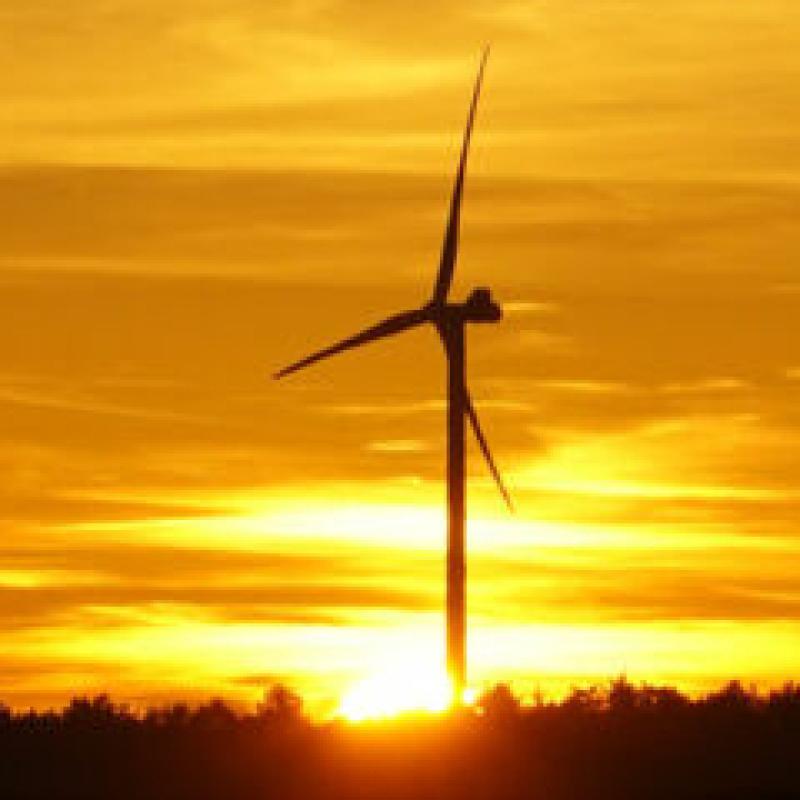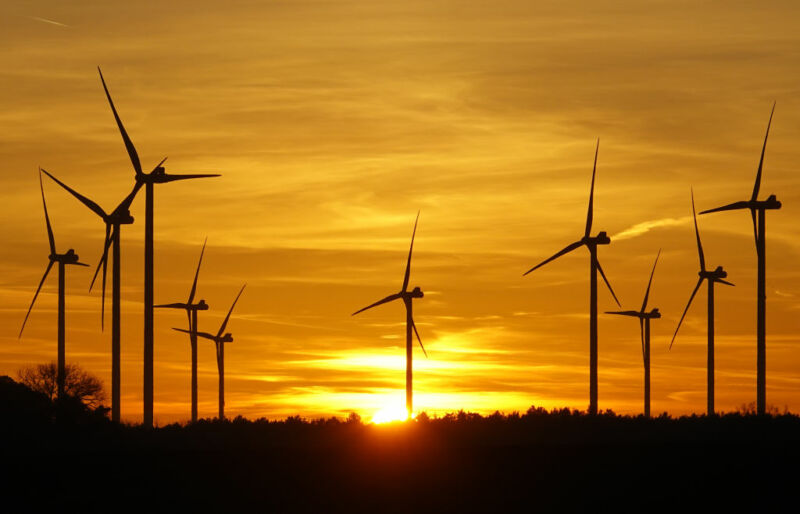New study: A zero-emissions US is now pretty cheap
By: j-timmer (Ars Technica)


In 2050, benefits to the US offset costs, but there are some unexpected outcomes

Costs are evolving so fast that I, for one, have a hard time keeping up.
What's encouraging here, it that it shouldn't be too hard to make sequestration commercially viable.


EnlargePicture Alliance / Getty Images
In many areas of the United States , installing a wind or solar farm is now cheaper than simply buying fuel for an existing fossil fuel-based generator. And that's dramatically changing the electricity market in the US and requiring a lot of people to update prior predictions. That has motivated a group of researchers to take a new look at the costs and challenges of getting the entire US to carbon neutrality.
By building a model of the energy market for the entire US, the researchers explored what it will take to get the country to the point where its energy use has no net emissions in 2050—and they even looked at a scenario where emissions are negative. They found that, as you'd expect, the costs drop dramatically—to less than 1 percent of the GDP, even before counting the costs avoided by preventing the worst impacts of climate change. And, as an added bonus, we would pay less for our power.
But the modeling also suggests that this end result will have some rather unusual features; we'll need carbon capture, but it won't be attached to power plants, for one example.
Model all the things
Decent models of the future energy economy are complex. They typically involve breaking the grid down by region and simulating typical demand by using historic data, often scaled to represent increased demand. They'll then try to meet that demand using different energy sources, subject to a set of applied constraints. So, in this case, one of the constraints would obviously be limiting carbon emissions. The model then iterates over possible ways of meeting both the demand and constraints in the most economical way possible, identifying an optimal solution.
In this case, the researchers set up a series of eight scenarios that applied different constraints. These scenarios include things like continuing current trends into the future (where fossil fuel prices are low), or simply identifying the cheapest carbon-neutral pathway. Other variations include a scenario with an all-renewable grid and high levels of efficiency technology; another scenario where the land given over to energy production is constrained; and a scenario where the United States manages to reach negative net emissions.
The US uses fossil fuels for a lot of things beyond electrical generation, and shifting these to emissions-free options is also part of the model. These include things like switching vehicles and heating to electrical options and altering industrial processes where possible. Carbon capture is deployed as needed to reach emissions goals.
One of the things that's immediately apparent from running the business-as-usual model is how much already changes thanks to the price drops in wind and solar. In this scenario, carbon emissions will drop by 22 percent, largely due to the displacement of coal use. It's worthwhile knowing this, as any proposals for a target in that area can be dismissed as irrelevant. Another thing that is clear is that decarbonizing the energy system doesn't mean the US will eliminate greenhouse gas emissions. The non-carbon greenhouse gases will still provide the equivalent of 500 metric megatons of carbon dioxide.
Efficiency and beyond
One of the things the research has made clear is that efficiency will be absolutely necessary for reaching emissions targets. By 2050, rising population and GDP should boost energy demand in the absence of efficiency. But, to get to carbon neutrality, we'll have to keep energy use roughly equal to our present levels. Some efficiency will occur simply because electrical vehicles and heating systems are inherently more efficient. But it's clear that we'll need quite a bit beyond that, since the research team estimates that per-capita energy use has to decline by about 40 percent in the next 30 years to reach carbon neutrality.
While energy use may stay level, the increased electrification of homes and vehicles will mean that we'll need significant increases in generating capacity. The typical scenario would involve about 3.2 terawatts of new capacity, almost all of it in the form of wind and solar power.
The good news is that doing this is relatively cheap. The researchers estimate that the net cost of the transformation will be a total of $145 billion by 2050, which works out to be less than one-half percent of the GDP that year. That figure does include the increased savings from electrical heating and vehicles, which offset some of their costs. But it doesn't include the reduced costs from climate change or lower health care spending due to reduced fossil fuel use. These savings will be substantial, and they will almost certainly go well beyond offsetting the cost.
Due to the reduced cost of renewable generation, the authors project that we'll spend less for electricity overall, as well.
The most expensive scenarios raise the cost to about 1 percent of the 2050 GDP. Notably, going to net negative emissions is not the most expensive; instead, limiting land use cuts down on the amount of renewable energy that could be deployed, raising costs.
Part of the reason it is so cheap is because reaching the goal doesn't require replacing viable hardware. All of the things that need to be taken out of service, from coal-fired generators to gas hot-water heaters, have finite lifetimes. The researchers calculate that simply replacing everything with renewables or high-efficiency electric versions will manage the transition in sufficient time.
Not what you might expect
Many takes on a carbon-neutral grid assume that periods of low solar and wind production will be smoothed over with gas generators using carbon capture and storage. But this analysis suggests that any remaining gas plants simply won't run often enough to provide an economic justification for the carbon-capture hardware. Similar things are true with batteries; the periods when demand outstrips capacity are expected to be so rare that it doesn't make economic sense to build that many batteries to cover them.
Instead, gas plants will simply dump their carbon emissions into the sky. This ends up being carbon neutral because we'll still need some liquid fuels for things like air travel, and we'll make these with carbon pulled back out of the atmosphere, combined with hydrogen produced from water during periods of excess renewable supply. The researchers estimate that we would require 3,500 terawatts just to make enough hydrogen—roughly the same amount of electricity we make currently.
"Until recently, it was unclear whether variable renewable energy, nuclear, or fossil fuel with carbon capture and storage would become the main form of generation in a decarbonized electricity system... The cost decline of variable renewable energy over the last few years, however, has definitively changed the situation."
The scenarios with additional constraints produce some odd results as well. The only scenario in which nuclear power makes economic sense is the one in which land use is limited. This also drives more wind offshore and relies on fossil fuel plants with carbon capture. Not surprisingly, this turns out to be the most expensive situation the researchers looked at. Carbon capture, along with enhanced biomass use for power, also features prominently in a scenario where the shift to electric vehicles and appliances is delayed.
Going entirely renewable actually forces much higher levels of carbon capture to ensure that fuel needs could be met without any fossil fuels. And going net negative involves a variety of carbon capture and biofuels, with substantial land use as a result of the latter.
Everything has changed
To an extent, the researchers themselves seem somewhat surprised by how much has changed in the last few years. "The net cost of deep decarbonization, even to meet a 1°C/350 ppm trajectory," they write, "is substantially lower than estimates for less ambitious 80 percent by 2050 scenarios a few years ago." It also provides clarity to what has been an uncertain future. "Until recently, it was unclear whether variable renewable energy, nuclear, or fossil fuel with carbon capture and storage would become the main form of generation in a decarbonized electricity system," they note. "The cost decline of variable renewable energy over the last few years, however, has definitively changed the situation."
Now, even if we go for deep decarbonization, we'll be investing in the future. It will cost money to get there, but we'll have lower future energy costs if we pay the price upfront—as well as improved health and a more stable climate.
There are, however, significant hurdles to getting there beyond simple economics. The emission-free future will involve us installing roughly 160GW of wind and solar per year in less than two decades; 2021 will see us installing only 15GW. And the switch to electric vehicles and appliances has to start now—anything that breaks should be replaced with an electric version, which does not seem to be happening.
But if this analysis holds up, there are good reasons to think it's worth getting started.

Tags






